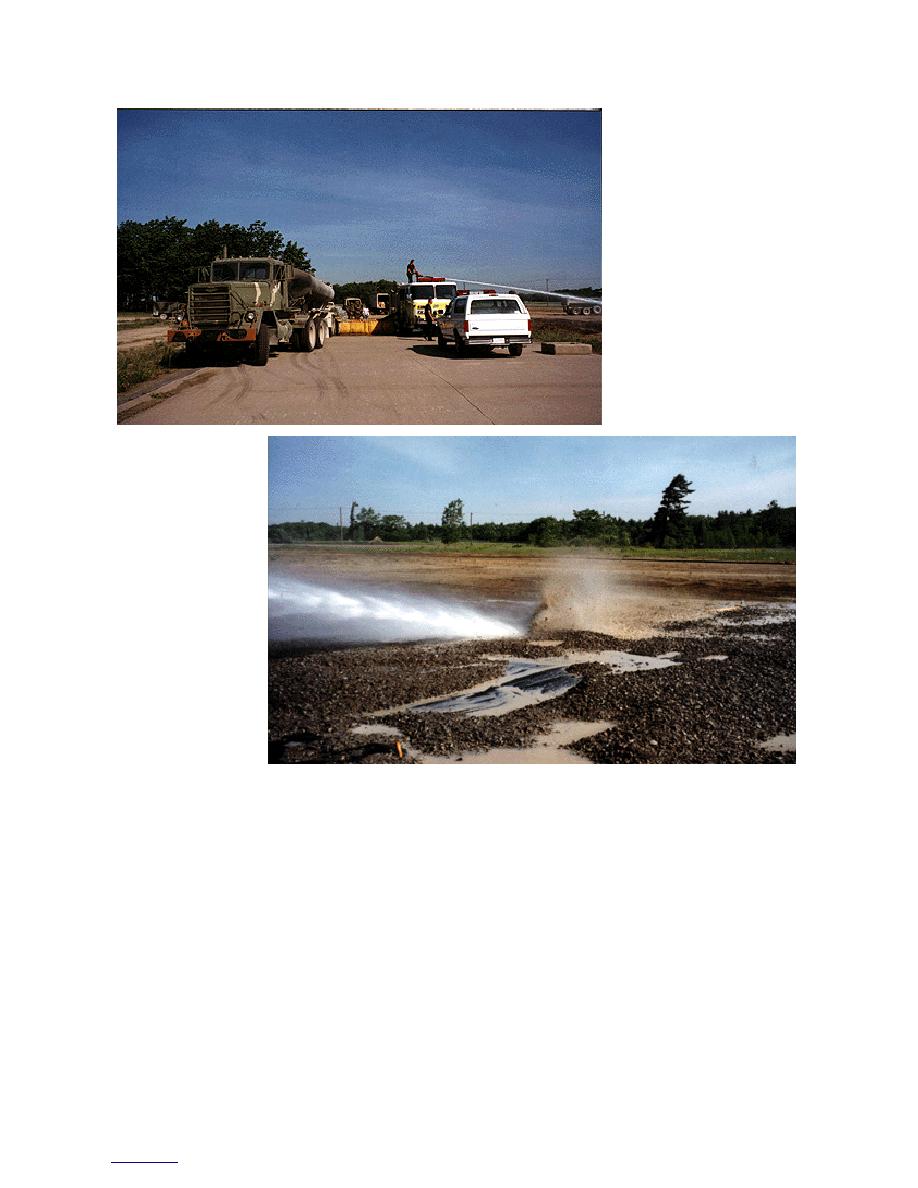
Figure 15. Equipment used to
wash gravel off the test section.
Figure 16. Washing
gravel.
mized damage to the membrane. The membranes
10 August 1997. The 131st Engineering Unit of the
Vermont National Guard did the construction.
were then visually inspected for damage and
The test site was an old gravel pit. Because of
punctures.
the low quality of the gravel (due to a high fines
content), it was typically used as a fill material at
Absorbent demonstration
least 0.61 m (2 ft) below the road surface. A thin
The original plans included constructing an ad-
ditional MESL with a dirty sand/gravel as the fill
organic layer had formed on the gravel and sup-
soil at the Ethan Allen Firing Range (EAFR) in Jer-
ported grass growth. A test section approximately
icho, Vermont. The plans were changed when it
4.57 m (15 ft) wide by 130 m (100 ft) long was pre-
was determined that MESLs could not be con-
pared for the test. The existing material was mixed
structed by the 365th Combat Heavy Engineering
together using a dozer, and additional silty sand
Battalion during the Fort Drum demonstration be-
was added. Water was added to make the soil
cause of the limited amount of time the engineers
muddy (Fig. 17). The wet layer was approximately
were available at EAFR. The new plan was to test
305 mm (1 ft) deep with a solid layer underneath.
the absorbent in a wet soil and qualitatively evalu-
When trafficked, a 5-ton truck (Fig. 18) would sink
ate its performance.
to the hard layer, and in some places the soil was
The absorbent test was conducted at EAFR on
too weak to maintain the wheel ruts (Fig. 19).
12



 Previous Page
Previous Page
